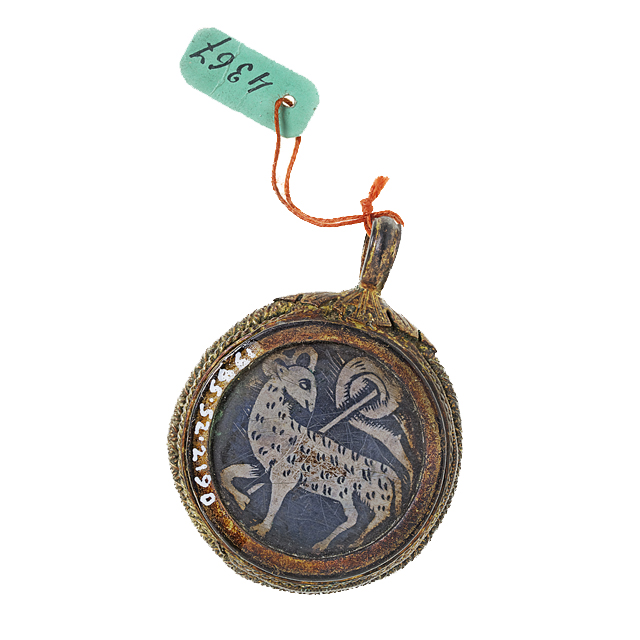Paschal Lamb, France

Transferred from the Wellcome Institute in 1985; 1985.52.2190
This gold pendant has an image of the Paschal Lamb (also known as Agnus Dei or Lamb of God) etched on one side and a heart and chalice on the other. It was worn as an amulet by a soldier who died in a military hospital in Nantes, France, during the First World War.
The Paschal Lamb (from the Hebrew word Pesach, meaning ‘Passover’) is associated with the Jewish Passover festival and the Old Testament story of the Exodus. According to this story, God helped the Israelites escape slavery in Egypt by inflicting ten plagues upon the Egyptians. To ensure their protection from the tenth plague, God instructed the Israelites to slaughter a lamb and mark their doorposts with the lamb’s blood. The plague passed over the homes that had been marked, and the Israelites were saved.
Amulets bearing the image of the Lamb have been worn since the Middle Ages. They were originally small moulded wax discs, known as Agnus Dei, and were made in Rome from the wax of Paschal candles, which were lit at Easter. Sanctified by the Pope and encased in silver or gold, Agnus Dei were worn as amulets against evil and for protection during pregnancy and childbirth.
